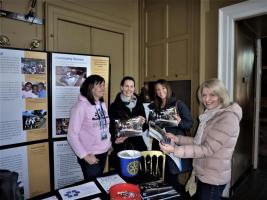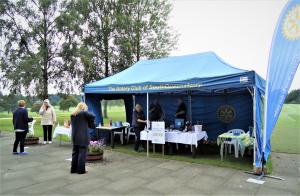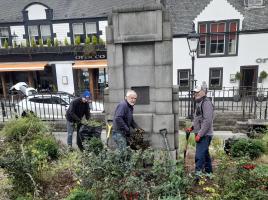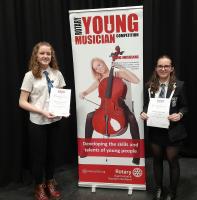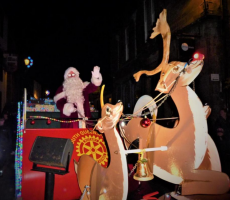Speakers Evening
Thu, Nov 5th 2020 at 7:00 pm - 9:00 pm
Speaker: Frank Hay: Researching the History of Queensferry,
Raffle: David Buchanan,
Reception: Jim McCulloch / Morrison Handley-Schachler,
The meeting was held via Zoom
Frank Hay from the Queensferry History Group was the speaker at the Rotary Club of South Queensferry's virtual meeting on Thursday 5th November. In an interesting presentation, Frank explained the origin of the group and described some of the current projects in which its members are involved. In a quick summary of the town's history, he said that Queensferry had been inhabited as far back as Stone Age times. Evidence such as the many Roman coins found in the area showed that, for a brief period, it represented the northern frontier of the Roman empire. Sources Frank and the History Group use in their research include the collection in Queensferry Museum, Burgh records, The History of Queensferry by John Mason and Queensferry by Land and Water by WW Fyfe. Other sources are the Scotsman, the National Library of Scotland, and West Lothian newspapers. Frank learned some of the town's commercial history from The History of the Distillery by James Wyld and studied Queensferry shipping by using Canmore Scottish Records. Further interesting information is contained in The Echline Family by Echlins of Pittardo and the development of the burgh can be studied in the map department of the National Library of Scotland. In 1854 the Ordnance Survey made its first map of the area. The bench mark used may still be seen on the wall outside the Rosebery Hall. The map shows many features which have yet to be researched such as the brown soap factory which was once in the town and the Paragon Works, a machinery factory in Dundas Estate near the Castle.
Working with Queensferry High School, the History Group explored the history of Queensferry witches, the Burry Man and Queensferry during World War 1. Echline Primary School looked at the stone age house and Roman watch tower at Springfield. Naturally the Forth Rail Bridge is a rich subject for research. The History Group worked with Barnardos on the Your View of the Forth Rail Bridge Project. To date, 135 groups have been taken to the top of the Forth Rail Bridge, raising over £200,000 over the past two years. In conclusion, Frank said that there were still many gaps to be filled in Queensferry's history and intriguing puzzles to be solved. For example who was the woman called Stuart Russell buried in the Vennel Cemetery under a replica of a mediaeval gravestone found in St Giles Church in Oxford? Frank Hay was introduced by Graham Leith. Morrison Handley-Schachler proposed the vote of thanks.
'What We Do' Main Pages:

We support Shelter Box, other international charities especially those working on relief after natural disaster.
more